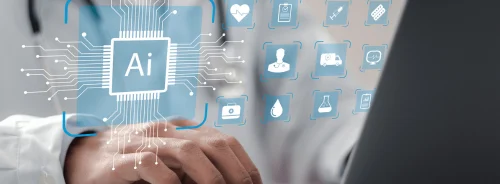HealthManagement, Volume 12 - Issue 4, 2012
Contrast-enhanced ultrasound (CEUS) is a revolutionary technique
that greatly improves the diagnostic capabilities of conventional ultrasound.
Due to its wide availability in Europe and its relatively low cost there has
been exponentially increasing interest in the clinical applications of CEUS.
The first studies on the clinical use were published at the beginning of this century using Levovist® as contrast material (Bertolotto et al. 2000; Burns et al. 2000). Later, sulphur hexafluoride (Sono-Vue®) was marketed in Europe, opening the era of real time low mechanical index (MI) examinations.
Micro bubbles contrast agents registered in Europe are licensed only for cardiac, liver, breast and vascular applications (Sono-Vue®). Levovist® is also registered for vesi coureteric studies, but is practically no longer marketed, and is expected ultimately to be no longer available. Thus, lots of daily non-hepatic applications continue to be off-label and patients should be informed and must consent to the investigation.
Clinical Guidelines and Recommendations
The European Federation of Societies for Ultrasound in Medicine and Biology (EFSUMB) released the first CEUS guidelines focused mainly on liver applications in 2004 (Albrecht et al. 2004). The update of the clinical recommendations on liver and other organs was published in 2008(Claudon et al. 2008). During 2008, an evidence-based medicine guideline addressing diagnostic imaging of focal liver lesions was produced by the Italian Ministry of Health providing recommendations in keeping with those of the EFSUMB guidelines (Filice et al. 2011).
Following the rapid innovation and progression of a number of new CEUS applications and supportive scientific articles, EFSUMB decided to divide the update of the guidelines into non-hepatic and hepatic applications. The former have already been published (Piscaglia et al. 2012). The latter, prepared in conjunction with the World Federation of Societies for Ultrasound in Medicine and Biology (WFUMB), are expected by late 2012.
The clinical recommendations are based on comprehensive literature surveys and/or on expert committee reports
and/or on the views of a panel of expert authors, providing a recommendation level (RL) for each indication, at least for the non-hepatic document (Piscaglia et al. 2012), based on the levels of evidence provided by the Centre for Evidence- Based Medicine, Oxford, UK (Piscaglia et al. 2012).
General Considerations for Contrast Agents
CEUS has a number of distinct advantages over CT and MRI: it can be performed immediately, without any preliminary laboratory tests, and provides information in real time. Moreover, unlike contrast materials used in CT and MRI, micro bubbles are blood pool agents with a purely intravascular distribution (D’Onofrio et al. 2005). The small diameter of the micro bubbles (2.5 μm) allows their trans pulmonary expulsion, without any renal or hepatic excretion.Due to the excellent safety for patients their administration can be easily repeated. Intracavitary applications such as intra vesical administration can also be performed.
In general, micro bubble contrast agents are very safe with a low incidence of side effects, as they are not nephrotoxic and do not interact with the thyroid gland. Life-threatening anaphylactoid reactions have been reported with a rate of less than 0.002% (Piscaglia and Bolondi 2006; ter Haar 2009). However, they are not licensed in pregnancy andbreastfeeding is a contraindication in some countries.
Some general recommendations are that resuscitation facilitiesshould be available; caution should be exercised foroff-label use in tissues/patients in which/whom damage tothe microvasculature may have serious clinical implications(i.e. eye, brain, neonate and children); and caution shouldbe exercised in patients with severe coronary artery diseaseand pulmonary hypertension.
CEUS studies are subject to the same limitations as other types of ultrasound. As a general rule, if the baseline ultrasound is very suboptimal, CEUS may be disappointing.
SonoVue® (introduced in 2001 by Bracco Spa) is the main agent in general use in non-cardiac applications, reported in almost all of the referenced articles. Its recommended dose is 2.4 ml, but it can be increased to 4.8 ml or decreased to 1.0 ml or less, depending on the sensitivity of the equipment used, the type of transducer and the organ under investigation.
CEUS Detailed Reporting
The most important applications of CEUS detailed reporting in the mentioned guidelines can be briefly summarised as follows.
Micro bubble specific software (with MI ≤ 0.3) that filters all the background tissue signals, making the vascular enhancement only due to the presence of micro bubbles, is required for the CEUS examination [10=7MDO]. Competence ensured by adequate training is a prerequisite to achieving correct diagnoses (Education and Practical Standards Committee, European Federation of Societies for Ultrasound in Medicine and Biology 2006; European Federation of Societies for Ultrasound in Medicine and Biology 2010).
Enhancement patterns are described during subsequent vascular phases (i.e. arterial, portal venous and late phase for liver lesions), similar to contrast enhanced CT (CECT) and/or MRI (CEMRI), taking into account the contrast distribution, described as homogeneous or heterogeneous and, in this case, if non-perfused regions exist, and the degree of enhancement. This is usually compared to the surrounding parenchyma or to the paired organ when available, if the target of the study is a focal region in a parenchymal organ, thus defining the target as hyper-enhancing, iso-enhancing, hypo-enhancing or non-enhancing. For targets that have no background tissue it is important to describe the presence or absence of enhancement and its distribution.
Hepatic Applications
CEUS has been largely demonstrated as an accurate imaging modality able to provide detection and characterisation of focal liver lesions (FLL) with close diagnostic agreement with CECT or CEMRI (Beissert et al. 2002; Albrecht et al. 2003). Portal and late phase enhancement give important information regarding the behavior of the lesion: most malignant lesions are hypo-enhancing while the majority of solid benign lesions are iso- or hyper-enhancing (Albrecht and Blomley 2001; Strobel et al. 2001; Dill-Macky et al. 2002; Wilson et al. 2000; Hohmann et al. 2003; Albrecht et al. 2000; Quaia et al. 2002; Leen 2001; Quaia et al. 2004; Blomley et al. 2001; Bryant et al. 2004; Dietrich et al. 2004).Thus the late phase is mainly used for detection of malignancies and the arterial phase mainly for characterising FLLs (i.e. hyper-enhancement with “chaotic vessels” in hepatocellular carcinoma, rim enhancement with rapid and marked wash-out in cholangiocarcinoma, peripheral globular or rapid homogeneous enhancement with progressive centripetal complete filling in cavernous or capillary hemangioma respectively, and homogeneous persistent hyper-enhancement with centrifugal filling with or without a central scar in focal nodular hyperplasia). As a consequence, CEUS is indicated in all patients with uncertain liver lesions, particularly if incidentally detected on routine US in chronic hepatitis or liver cirrhosis, in patients with a known history of malignancy or in patients with inconclusive MRI/CT.
CEUS can also be used for the immediate assessment and follow-up of local ablative treatment (Cioni et al. 2001; Cova et al. 2003). Care should be taken not to misinterpret the perilesional hyperemic halo (normally found within the first 30 days after treatment) with a residual viable tumour.
Non-Hepatic Applications
1) Pancreas
The pancreatic application of CEUS is mainly addressed to the characterisation of focal lesions, distinguishing between their solid and cystic nature (RL:C;5), and defining their relationship with the peri-pancreatic vessels (RL:B;2b) (Dietrich et al. 2008; D’Onofrio et al. 2007; Faccioli et al. 2008; Grossjohann et al. 2010).
Ductal adenocarcinoma typically presents as an hypo-enhancing mass in all phases, due to the desmo plastic reaction (RL:A;1b) (D’Onofrio et al. 2006; Kersting et al. 2009; Numata et al. 2005; D’Onofrio et al. 2012).
Neuro endocrine tumours typically show a homogeneous hyper-enhancement in the arterial phase, owing to the rich arterial vascularisation, even if negative at Doppler study (Dietrich et al. 2008; D’Onofrio et al. 2004; Malagò et al. 2009). In larger tumours, necrotic avascular areas result in heterogeneous enhancement (D Onofrio et al. 2004;Malagò et al. 2009).
CEUS improves the differential diagnosis between pseudocysts cystic tumours, the first containing non-vascularised debris (RL:A;1b) (D’Onofrio et al. 2012; Rickes and Wermke 2004). Mucinous cystadenoma is a potentially malignant lesion usually appearing as a round macrocystic tumour, with irregular thick wall and internal enhanced septa and nodules (D’Onofrtio et al. 2007; D’Onofrio et al. 2012; Rickes and Wermke 2004). Serous cystadenoma is a benign lesion, typically presenting with a lobulated pattern with centrally oriented thin vascularised septa (D’Onofrio et al. 2007). The microcystic type may mimic a solid lesion owing to the number of hyper enhanced septations (D’Onofrio et al. 2010). In cases of intraductal papillary mucinous neoplasm, CEUS is able to differentiate between perfused (nodules) and non-perfused (clot) inclusions (Itoh et al. 2005), but MRI still remains the method of choice for its characterisation (D’Onofrio et al. 2010).
CEUS can also have a role in evaluation and follow-up (Ripolles et al. 2010) of inflammatory pancreatic pathologies CT staging. In severe acute pancreatitis, necrosis presents as non-enhanced areas (RL:A;1b), while mass forming and autoimmune pancreatitis has been reported to show similar enhancement to the normal parenchyma (D’Onofrio et al. 2006).
CE endoscopic ultrasound is a new method which combines the advantage of high resolution US of internal organs with the administration of micro bubbles (D’Onofrio et al. 2010). It can be used in cases in which significant art facts impede transcutaneous visualisation, with the same recommendation levels.
2) Kidney
The renal application of CEUS is mainly addressed to the detection of parenchymal ischemia or infarction (hypo-perfused or non-enhancing area) (Bertolotto et al. 2008), which differ from cortical necrosis (non-enhancing area with preserved hilar vascularity) (Correas et al. 2006; Bertolotto and Catalano 2009) (RL:A;1a). Moreover, CEUS is a useful method to differentiate between cystic and solid lesions (RL:B;2b), especially hypo vascular tumours (Tamai et al. 2005), solid tumours and pseudotumours (showing in the latter the same enhancing features as the surrounding parenchyma in all phases) (Correas et al. 2006; Mazziotti et al. 2010) (RL:B;1b) and bland venous thrombus (non-enhancing) from tumour invasion (enhancing). Although a precise differentiation between benign and malignant solid lesions is not possible, CEUS can characterise cystic lesions (RL:A;1b), precisely depicting the potential enhancement of wall, septa and solid components (Quaia et al. 2008; Clevert et al. 2008; Park et al. 2007; Ascenti et al. 2007). It allows an accurate assessment of percutaneous ablation therapies (Hoeffel et al. 2010) (RL:B;1b). On the other hand, the role of CEUS in renal infections is still debated (RL:C;5).
3) Other Applications
CEUS can be also used in the evaluation of other organs usually studied by US, more or less improving the characterisation of focal or diffuse pathologies. The most important applications are for the gastrointestinal tract (especially in inflammatory bowel diseases), stable minor abdominal trauma patients, and vascular structures (especially for potential complications after intervention, i.e. endo leaks).However, many limitations still exist and only a few papers are present in the literature.
Micro bubbles can also be used to assess the tumour response after anti-angiogenic therapy both by qualitative and semi-quantitative analyses (Lassau et al. 2005; Cosgrove and Lassau 2010). For an accurate description of these methods and applications, we recommend the readers to refer respectively to a recent technical publication from EFSUMB (Dietrich et al. 2012) and the published complete guidelines.






